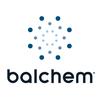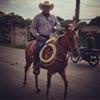Explore all the information on
Dairy cattle ruminal performance
Welcome to the page about Dairy cattle ruminal performance of Engormix; a source of knowledge on Dairy cattle ruminal performance.
From the developing bud to the industrial bug...
Being considered as the oldest and best understood microorganism, the yeast Saccharomyces cerevisiae still remains valuable to mankind's future. Since ages, Egyptians followed by Romans, used yeast to leaven bread and to produce alcoholic beverages. This clever bug has definitely a marvellous habit of evolving to suit its environment and has been the business vault of many industries....
Comments : 2
Recommendations: 0
As producers, nutritionists and veterinarians we are used to seeing molds on the farm. Molds are ubiquitous in the environment and it has been well documented that some of these molds have the ability to produce poisons known as mycotoxins. Because of their ability to survive many environmental conditions, different species of molds have the ability to grow on the crop in the field pre-harvest, during harvest and also post harvest. It has also been documented that mycotoxin...
Comments : 6
Recommendations: 0
Rumen pH is one of the most critical determinants of rumen function particularly for the cellulolytic rumen bacteria which fail to grow at pH 6.0 and below. Rumen pH falls as a result of enhanced fermentation due to increasing concentrate in the diet, this fall inhibits degradation of the fibrous components of the diet and is the cause, in part at least, of the negative associative effects between forages and concen- trates. It has been suggested that feed additives based on...
Comments : 1
Recommendations: 0
Rumen microbiology
The rumen is the first stomach of cattle, sheep and goats. All digestion in this organ is carried out by a microbial population which consists of ciliate protozoa, anaerobic bacteria and anaerobic fungi. The bacteria are genetically very diverse, deriving from many different origins, whereas the protozoa are monophyletic, thought to have evolved from a symbiotic protozoan which established in the rumen...
Comments : 2
Recommendations: 0
Reducing potential can be defined as the tendency of a system to gain or donate electrons, and it is a derivation of the Gibbs free energy change equation applied to redox reactions. Redox reactions are those in which chemical species change their oxidation numbers and, generally, electrons are transferred between them. The Gibbs free energy change equation is derived from the First and Second Laws of classical thermodynamics and allows calculating whether or not...
Comments : 0
Recommendations: 0
The dairy cow is a magnificent producer of food. In approximately 10 months, a good cow can produce 496 pounds of protein, 784 pounds of energy in the form of the sugar lactose, 560 pounds of fat, and 112 pounds of minerals all in 16,000 pounds of milk. This is enough protein to supply the needs of a man for nearly 10 years, enough energy for 5 years, and enough calcium for 30 years. The supply of high quality feedstuffs to the cow's highly complex digestive system helps accomplish this...
Comments : 5
Recommendations: 0
Our thanks to the author and Conference Organisers, a Committee consisting of both University and Industry colleagues. The full paper appears in the Conference Proceedings ('Recent Advances in Animal Nutrition - 2007', edited by Phil Garnsworthy and Julian Wiseman) published by Nottingham University Press in 2007 www.nup.com ...
Comments : 6
Recommendations: 0
TO OPTMISE RUMINANTS PERFORMANCE AND HEALTH, BIO REGULATON, A NEW CONCEPT, TARGETS EVERY STEP OF THE WHOLE NUTRTIONAL EXPERIENCE, FROM SENSORIAL STIMULATON AND APPETENCE TO DIGESTION EFFICACY AND DIGESTIVE HEALTH. VIRGINIE NOIROT EXPLAINS THE BENEFITS IN RUMINANTS. Based on the idea that the health, nutrition and behaviour (stress, well-being etc.) of farm animals should be considered as a whole, Phodé R&D department...
Comments : 2
Recommendations: 0
Keeping cows in their thermoneutral zone – 41 and 68 degrees – can minimize the impact of seasonal changes on milk production, reproduction, feed efficiency and income-over-feed cost, said John Smith, a dairy science Extension specialist in the Department of Animal Sciences and Industry at Kansas State University. Speaking at the Cornell Fall Dairy Conference last year, Smith pointed out the negative and well-documented impacts of heat stress to a...
Comments : 0
Recommendations: 0
As dairy consultants and managers use computer-based rumen models to fine-tune feeding programs, questions are raised. How effective are these programs? What information do they provide? Do software programs provide similar results? This study evaluated protein relationships and results. Material and Methods A standard ration was balanced using a university software program (Spartan II, Michigan State University) that did not have a rumen modeling software. The...
Comments : 0
Recommendations: 0
Protein degradation by ruminal microbes results in the formation of ammonia, and peptides and amino acids ( AA ) are intermediates in this process. Ammonia that accumulates in excess of microbial requirements is converted to urea in the liver and excreted in the urine, resulting in inefficient nitrogen ( N ) utilization by the animal. Mounting evidence indicates that peptides and free AA stimulate microbial fermentation and yield. Furthermore, di- and tripeptides may contribute to...
Comments : 1
Recommendations: 0
As dairy herd sizes increase and group housing becomes more predominant, it's now more important than ever to understand factors that can affect a cow's behaviour. A complete assessment of your feeding system and adjusting it as needed can have a positive impact your herd's health and productivity.
Researchers have looked into many aspects of feeding over the past few years. Let's take a closer look at group housing, total mixed ration [TMR] feeding and cow feeding patterns to see...
Comments : 3
Recommendations: 0
Many research projects have shown that feeding undegradable, or bypass, protein supplements has a positive effect on milk production. Common sources of undegradable protein are dried distillers grains, blood meal, meat and bone meal, corn gluten meal and feather meal. Generally, any cow producing over 5 kg milk/100 kg of body weight could benefit from undegradable intake protein (UIP); however, we often receive phone calls asking why the feeding of such supplements had no effect on milk...
Comments : 0
Recommendations: 0
Calf-raising is an essential part of a dairy operation. The primary goals during the early weeks of a calf's life are to develop a strong immune system and to stimulate rumen development. If these goals are met, low stress weaning at six weeks of age or less can occur. A USDA survey showed that over 58% of producers wean their calves at 6 to 8 weeks of age with over 15% waiting until 12 weeks of age or later.
The motivation for early weaning is simple: every day it takes to wean your...
Comments : 0
Recommendations: 0
One of the most prevalent metabolic diseases among dairy cows is subacute ruminal acidosis (SARA). Unfortunately it is also one of the more difficult to diagnose and prevent. The economic consequences of SARA are mind boggling. It has been estimated that the North American dairy industry loses between $500 million and $1 billion annually to SARA with a cost per affected cow of $1.40/day. SARA The pH (acidity) of rumen fluid is...
Comments : 1
Recommendations: 0
Fat contains over two times the amount of energy found in grain. This makes it a very good energy supplement for early lactation cows. The intake of supplemental fat should not exceed 5% of the ration. This corresponds to approximately 0.7 to 0.9 kg fat/day (1.5 to 2 lbs). If this is exceeded, rumen fermentation can be affected and milk fat depression, reduced feed intake and off-feed problems may occur. There are three sources of supplemental fat. ...
Comments : 2
Recommendations: 0
A wireless measuring system, consisting of sensors and transmission units, helps to keep livestock healthier with a minimum use of resources. Gone are the good old days when farmers knew all their cows by name. There is little time left for the animals in today’s dairy industry. And it is easy to overlook the first signs of disease. This situation can now be remedied by a tiny sensor in the cow’s rumen, which monitors the animal’s state of health and raises the alarm in good...
Comments : 0
Recommendations: 0
High quality forages are the backbone of every feeding program. For years, dairy producers have been cutting forages early to maximize protein and energy content. Too often though, these forages do not result in the milk production one might expect from the feeding of high quality forage. What has gone wrong? An important function of forages is to provide the fibre necessary for rumen function. Cutting forage early improves quality (protein, digestibility) but decreases the fibre...
Comments : 0
Recommendations: 0
Ruminants make efficient use of diets that are poor in true protein content because microbes in the rumen are able to synthesize a large proportion of the animal’s required protein. The amino acid (AA) pattern of this protein is of better quality than nearly all of the dietary ingredients commonly fed to domestic ruminants (Broderick, 1994; Schwab, 1996). In addition, ruminal microbial utilization of ammonia allows the feeding of nonprotein N (NPN) compounds, such as urea, as well as the...
Comments : 1
Recommendations: 0
Evaluations of four soybean meal (SBM) products were conducted. The products were: solvent SBM (SSBM), expeller SBM (ESBM), lignosulfonate-treated SBM (LSBM), and SSBM treated with 0.05% Baker's yeast and toasted at 212ºF (YSBM). In situ ruminal degradations of YSBM and LSBM were slower than those of SSBM or ESBM; thus, ruminally undegraded protein contents of YSBM and LSBM were greater than those of SSBM or ESBM. The ruminally undegraded protein of all SBM products had similar small...
Comments : 0
Recommendations: 0

.jpg&w=3840&q=75)


.jpg&w=3840&q=75)




